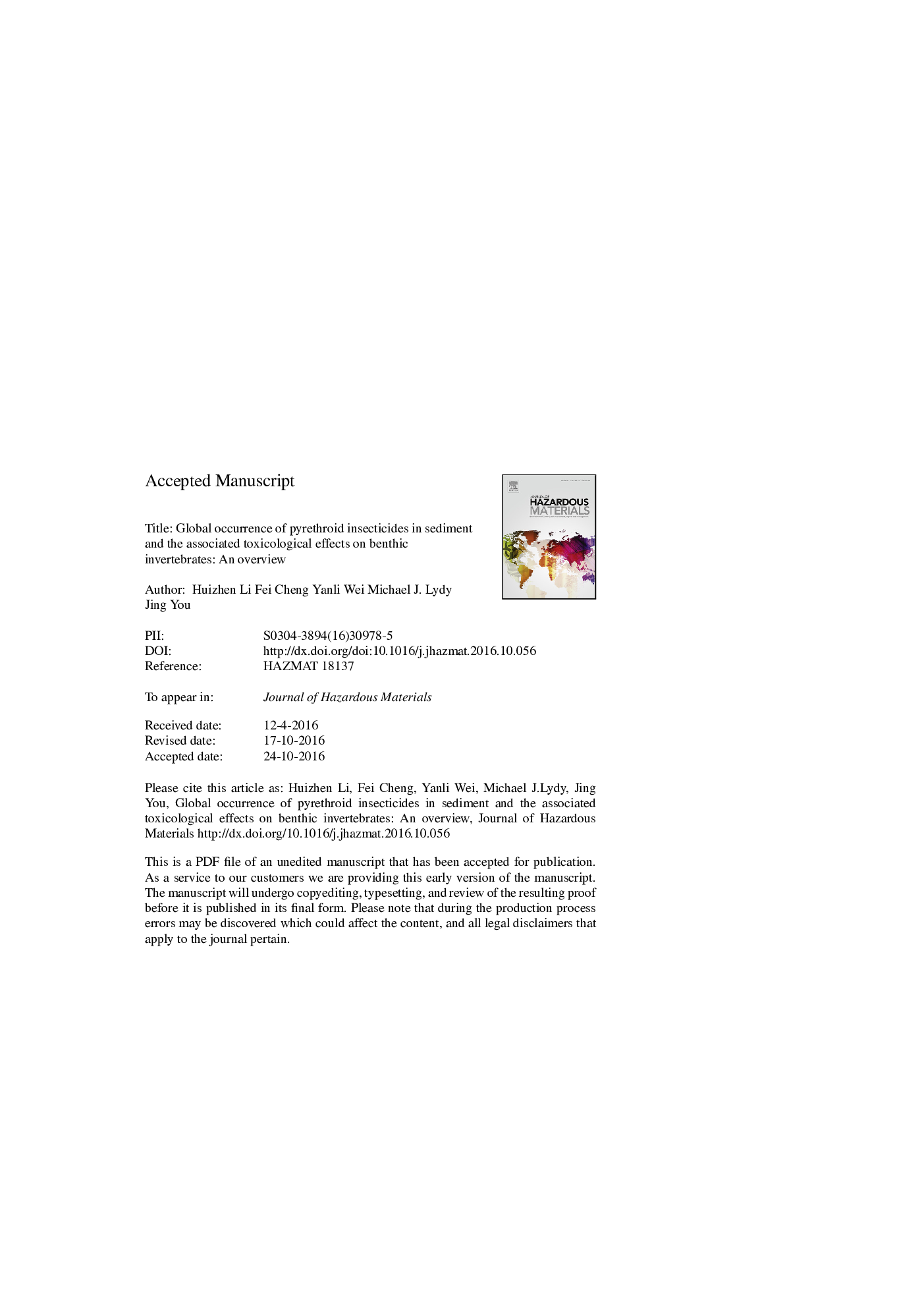| Article ID | Journal | Published Year | Pages | File Type |
|---|---|---|---|---|
| 4979850 | Journal of Hazardous Materials | 2017 | 53 Pages |
Abstract
Pyrethroids are the third most applied group of insecticides worldwide and are extensively used in agricultural and non-agricultural applications. Pyrethroids exhibit low toxicity to mammals, but have extremely high toxicity to fish and non-target invertebrates. Their high hydrophobicity, along with pseudo-persistence due to continuous input, indicates that pyrethroids will accumulate in sediment, pose long-term exposure concerns to benthic invertebrates and ultimately cause significant risk to benthic communities and aquatic ecosystems. The current review synthesizes the reported sediment concentrations of pyrethroids and associated toxicity to benthic invertebrates on a global scale. Geographically, the most studied area was North America, followed by Asia, Europe, Australia and Africa. Pyrethroids were frequently detected in both agricultural and urban sediments, and bifenthrin and cypermethrin were identified as the main contributors to toxicity in benthic invertebrates. Simulated hazard quotients (HQ) for sediment-associated pyrethroids to benthic organisms ranged from 10.5 ± 31.1 (bifenthrin) to 41.7 ± 204 (cypermethrin), suggesting significant risk. The current study has provided evidence that pyrethroids are not only commonly detected in the aquatic environment, but also can cause toxic effects to benthic invertebrates, and calls for better development of accurate sediment quality criteria and effective ecological risk assessment methods for this emerging class of insecticides.
Related Topics
Physical Sciences and Engineering
Chemical Engineering
Chemical Health and Safety
Authors
Huizhen Li, Fei Cheng, Yanli Wei, Michael J. Lydy, Jing You,
